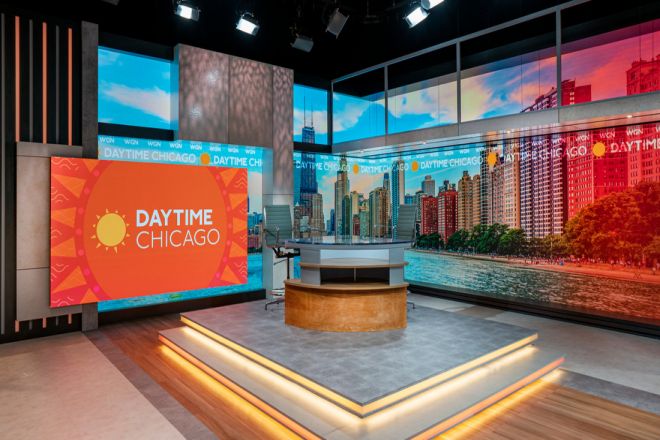Introduction

With the rapid development of technology, LED displays have become an indispensable part of our daily lives. From commercials to home theaters, from large exhibitions to sports events, LED displays have occupied an important position in the display field with their high brightness, high contrast, and long life.
However, facing the dazzling array of LED display products on the market, how to choose a display that suits their needs has become a challenge for many consumers and purchasers.
1. Analysis of HD LED Displays
HD resolution, or high-definition resolution, usually refers to 1080p, which means 1920 pixels horizontally and 1080 pixels vertically. In LED displays, HD resolution provides a clear enough display effect to meet the needs of most daily applications. Whether watching videos, browsing pictures, or displaying text, HD resolution can bring a good visual experience.
1). Advantages Analysis
Relatively low cost: Compared with high-resolution displays such as 4K and 8K, HD displays have lower production costs, so the price is more affordable. This makes HD displays the first choice for users with limited budgets.
Clear enough for ordinary viewing and non-professional needs: For most ordinary users, HD resolution is sufficient to meet daily viewing needs. Whether it is a home theater, commercial advertising, or office display, HD display can provide clear and delicate picture quality.
2). Disadvantages Analysis
Relatively low resolution: Compared with high-resolution displays such as 4K and 8K, HD resolution has a relatively small number of pixels. This means that when showing some scenes that require high-precision details, such as high-definition photography, professional film and television production, HD displays may appear powerless.
Pixel grain may appear on large-size displays: When the size of the HD resolution display is too large, due to the relatively large distance between pixels, the picture may have obvious pixel grain. This phenomenon is particularly obvious when viewed at close range and may affect the user’s viewing experience. Therefore, when choosing a large-size LED display, it is necessary to weigh the relationship between resolution and size.
2. 4K LED display analysis

4K resolution, also known as ultra-high-definition (UHD) resolution, has a standard resolution of 3840×2160 pixels. This means that there are 3840 pixels in the horizontal direction and 2160 pixels in the vertical direction, totaling 8.29 million pixels. In LED display screens, 4K resolution has a significant improvement in picture quality compared to traditional HD resolution (1080p).
Higher pixel density makes the picture more delicate, the colors more saturated, and the details more outstanding.
1). Advantages Analysis
- High resolution and richer picture details:
4K resolution LED display screens can present more delicate and realistic picture effects. Whether watching HD movies, playing game screens, or displaying HD pictures, users can experience an unprecedented visual experience.
- Suitable for a variety of application scenarios:
Due to the excellent performance of 4K resolution LED display screens in picture quality, it is suitable for a variety of application scenarios.
For example, commercial displays can attract more attention and enhance brand image; in theaters, they can provide a more immersive viewing experience, making the audience feel as if they are in the world of movies.
2). Disadvantages Analysis
Relatively high cost: Compared with HD resolution LED display screens, 4K resolution display screens will increase in production costs, so the selling price is relatively high. This may exceed the budget range of some users.
High requirements for hardware performance: In order to support smooth playback of 4K resolution, higher-performance hardware support is required, such as a more powerful graphics processor (GPU) and larger memory. This may increase the user’s overall investment cost. At the same time, if the hardware performance is insufficient, it may cause problems such as screen freezes and delays, affecting the viewing experience.
3. 8K LED display analysis
The 8K resolution standard reaches an astonishing 7680×4320 pixels, which means there are 7680 pixels horizontally and 4320 pixels vertically, with a total of more than 33 million pixels.
In LED displays, 8K resolution provides the ultimate visual experience. Each pixel is finer, making the picture details richer and the colors fuller. Users can feel unprecedented clarity and delicacy as if they are in the picture.
1). Advantage analysis
- Extremely high resolution:
The 8K resolution LED display has an extremely high pixel density, which brings the picture delicacy to a new level. Whether it is text, pictures, or videos, it can show more details and texture.
- Suitable for high-end display:
Due to the picture quality advantage of 8K resolution, it is particularly suitable for high-end display, professional cinema, and other occasions with extremely high requirements for picture quality. For example, the precious cultural relics displayed in the museum and the background display in the high-end conference room can bring shocking visual effects to the audience.
2). Disadvantages Analysis
High cost: The production cost of an 8K resolution LED display is much higher than that of an HD and 4K resolution display, so the selling price is relatively high. For general users, its high price may not be cost-effective.
High hardware performance requirements: In order to support smooth playback and display of 8K resolution, extremely high-performance hardware equipment is required, such as high-performance graphics processors, large-capacity memory, etc. This not only increases the user’s investment cost but also poses a great challenge to existing hardware equipment.
Limited market support: There are relatively few devices and content that can support 8K resolution on the market, which also limits the application scope of 8K resolution LED display to a certain extent. However, with the advancement of technology and the development of the market, I believe that 8K resolution LED displays will be more widely used in the future.
4. Selection suggestions
1). Choose according to the application scenario.
When choosing an LED display, you first need to consider its application scenario. Different scenarios have different requirements for the resolution of LED display screens.
- Advertising display:
For outdoor billboards or commercial advertising displays, HD resolution is usually sufficient due to the long viewing distance. However, if the billboard is large or needs to display high-definition pictures and videos, 4K resolution will provide a better visual experience.
- Cinema projection:
For theaters, picture quality is crucial. 4K resolution has become the mainstream standard for current theater projection, while 8K resolution provides a more extreme viewing experience. Considering cost and technical support, theaters can choose the appropriate resolution according to actual needs and budget.
- Exhibition display:
At exhibitions, LED displays are usually used to display high-definition pictures, videos, or interactive content. In order to attract the audience’s attention, higher-resolution displays will bring better display effects. But factors such as cost and hardware support also need to be considered.
2). Consider budget factors
LED displays of different resolutions have significant differences in cost. Displays with HD resolution are usually lower in cost and suitable for users with limited budgets. Displays with 4K and 8K resolutions are more expensive but provide higher picture quality and visual experience. Users need to reasonably choose the appropriate resolution based on their own budget.
3). Technology Development Trends
With the continuous development of science and technology, LED display technology is also constantly improving. In the future, we can expect the emergence of technologies such as higher resolution, larger size, and higher refresh rate.
When choosing an LED display, users also need to consider the technology development trend. If the budget allows and there are high requirements for picture quality, choosing a 4K or 8K resolution display will better meet future needs. At the same time, it is also necessary to pay attention to the development and application of new technologies so that they can be upgraded and replaced when necessary.
Conclusion
In summary, LED displays with three HD resolutions, 4K and 8K, each have their own characteristics and applicable scenarios. When choosing an LED display, we need to comprehensively consider multiple factors such as application scenarios, budgets, and technology development trends.
For general home users, LED displays with HD resolution are sufficient to meet daily viewing and entertainment needs, while for commercial displays, professional theaters, and other occasions with high requirements for picture quality, LED displays with 4K or even 8K resolution can better show excellent picture effects and visual experience.
Finally, if you want to know more about LED displays, please get in touch with us.
